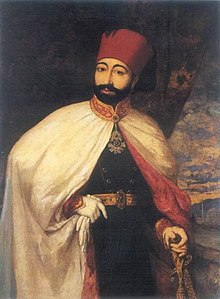 Synopsis:
Synopsis: England, 1483: Unloved and publicly disgraced, an adulteress walks the streets of London to Ludgate prison. Her feet are bare; in her hands she carries a penitential candle. Her name is Jane Shore.
Philip Lindsay recounts Jane’s story – from her marriage as a child of fourteen to William Shore to her life at court as one of Edward IV’s lovers – with a masterful knowledge of this troubled period in history.
Through wars and betrayal, secrecy and discovery, he weaves a compelling tale of a child thrust into the life of a woman, pulling in the reader until they are entirely submerged in her tale of woe and wonder.
For Jane Shore was a woman like no other, unafraid of danger and cunning enough to work herself from the position of a simple mercer’s wife to one of the Queen’s most trusted ladies in waiting – and even into the heart of the King.
This re-telling of Jane Shore's story dates from the 1950s, and opens with Jane as she performs her "walk of shame" in her kirtle through the streets with a taper in her hand, and attracting a lot of male attention along the way. Following her penance, Jane is confined to Ludgate Prison where she reflects on her life and takes us back to where it all began.
From humble beginnings as Elizabeth Lambert, daughter of a prosperous merchant, her early association with William Hastings, her marriage to William Shore (often referred to as a goldsmith), and through to the annulment of her marriage, Jane narrates her own story.
Jane was one of the many mistresses of King Edward IV of England, and one of three whom he described as "the merriest, the wiliest, and the holiest harlots" in his realm. He was said devoted to her and did not discard her as he had done with so many others; however, she was also said not "showered with gifts" as other were. Jane, far from being solely devoted to Edward,was also the mistress of other noblemen, including Edward's stepson, Thomas Grey, 1st Marquess of Dorset, and William Hastings, 1st Baron Hastings, his close friend and adviser.
Following the death of Edward IV, Jane was said to have brokered an alliance between Hastings and the Woodvilles. However, upon the accession of Richard as King, she is accused conspiracy, required to do public penance and imprisoned. Whilst in prison, her gaoler John Russell become so enamoured, that he petitioned the King to marry her. She lived the rest of her life in comfortable anonymity.
Lindsay's novel contains much detail, focuses more on her relationships, is slightly dated by today's standards, though is still quite a readable tome on a woman at the periphery of the Wars of the Roses.
further reading:
A Merry Mistress by Judith Saxton
The Tragedy of Jane Shore by Nicholas Rowe
The Unfortunate Concubine, Or, History of Jane Shore, Mistress to Edward IV. King of England by S. King
The Witchery of Jane Shore, the Rose of London: the romance of a royal mistress by Charles John Samuel Thompson
The Life and Character of Jane shore by George Sewell
Re-Presenting 'Jane' Shore: Harlot and Heroine by Maria M Scott
The Intrigues of Jane Shore: A Tragedy, Or, the Fate of Unlawful Love by J. Read
The Mysterious Mistress: The Life and Legend of Jane Shore by Margaret Crosland
Royal Mistress: A Novel by Anne Easter Smith
The Fair Penitent and Jane Shore by Nicholas Rowe
The Life and Death of Jane Shore by E. Petch
Mistress to the Crown by Isolde Martyn
The Goldsmith's Wife by Jean Plaidy
Figures in Silk by Vanorra Bennett













![The Drowning Guard: A Novel of the Ottoman Empire by [Lafferty, Linda]](https://images-fe.ssl-images-amazon.com/images/I/51pUxHQywIL.jpg)









